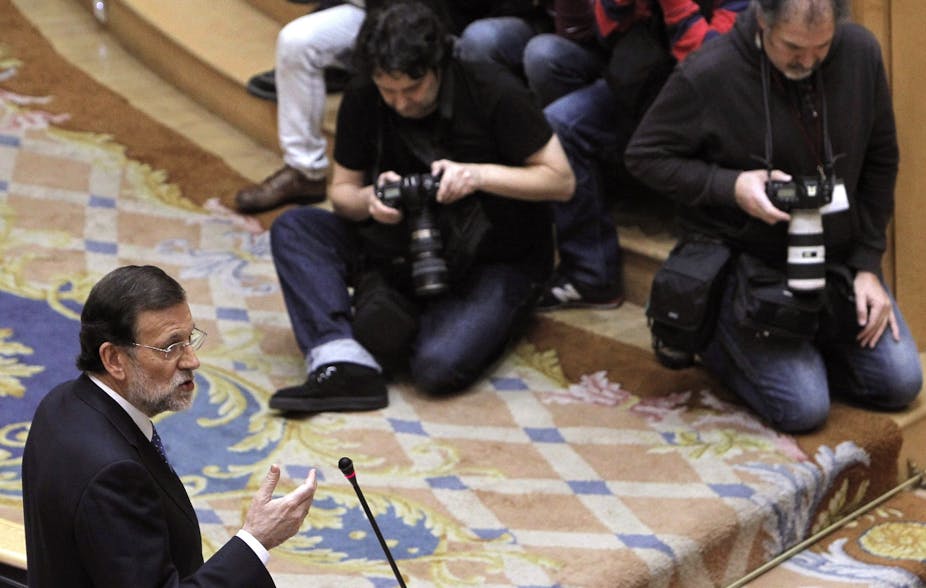Spaniards Fernando and Sara got married in 2007. With the help of their parents, the couple bought a house in the outer suburbs of Sevilla because they couldn’t afford one closer to the city.
An art history graduate, Sara hasn’t held a job for longer than six months. Although Fernando did well with the construction boom, his employer saved on social security contributions by hiring him always as a casual. (When in 2010 the demand for this kind of work declined, he was one of the first to go.) Despite their unstable financial situation, the bank gave them a mortgage, encouraging them to extend to cover the cost of furniture and a car.
Now all of this is history. Sara and Fernando, like many young Spaniards, lost their jobs and their house. They live with their parents now, yet they still owe the bank 90,000 euros, as in Spain, unlike in many other countries, one is not free of mortgage repayments once the house was repossessed by the bank. “At least in our case our parents didn’t guarantee our loan,” says Sara.
Many other parents were not so lucky, losing their own houses when their kids lost jobs and the banks moved onto the houses of the loan guarantors.

For months the opposition and social movements called for a stop to evictions that have so far affected some 400,000 families. Spain’s government, led by Mariano Rajoy, has now been forced into action following a woman’s suicide that made international headlines, and has finally accepted opening a dialogue with the main opposition party PSOE to devise measures that will protect the most vulnerable households.
This is the sorry end of Spain’s “economic miracle”, which led to an unsustainable housing bubble, a fundamental regulatory failure by Spain’s Central Bank and a humiliating 100 billion euro bank bailout in June.
Europe now waits to see whether Rajoy will accept a bailout from the European Central Bank to buy unlimited amounts of government debt in exchange for austerity and economic reforms - a bailout fiercely opposed by most Spaniards concerned that even more drastic reforms will affect retirement payments, so far untouched by Rajoy’s government.
Spain’s housing bubble began in 2005, with the media and economists urging Spaniards to buy property. Local governments made millions by reclassifying land from rural to urban. Corruption made millionaires out of politicians and developers. The bubble kept growing.
But while house prices continued to increase, salaries did not. As Spanish banks’ risk profiles began rising, it seemed the Spanish Central Bank was asleep.
Nowadays many ask why the Central Bank was so negligent. To answer this question we must look in more detail into the alleged Spanish economic miracle.
In the 1990s and 2000s, banks invested strongly in the real estate sector. The construction industry accounted for 12% of GDP, more than double than UK or France. Most workers were immigrants or youth that opted for the quick money instead of furthering their education. The ratio of housing price to average salary in Spain became almost triple that of EU-15 countries.
Not all economists see the source of Spain’s pain in the housing bubble, with Neoliberal economists insisting the current economic problems were caused by uncontrolled expansion of public spending. They defend measures such as curbing of public spending, privatising public companies, and labour reform (recently approved despite strong opposition from the unions) and changes to retirement system.
But economist Juan Francisco Martín Seco, also a columnist for Spain’s second-largest daily newspaper El Mundo, believes that the public deficit is caused much more by the fall in income than the increase in spending. He blames the situation on high fiscal fraud and uneven tax contributions among Spaniards, and disputes the argument that Spain spends too much on public services. (Not surprisingly, the title of his last book is Economy: Lies and Traps.
Vincenc Navarro, Professor of Public Policy at Johns Hopkins University, also points out that Spain’s Producto Interior Bruto (the equivalent of gross domestic product) per capita is 94% of EU-15 average, while the public spending only accounts for 72%. “If it were 94%, Spain would be spending 66 billion euros more on its public sector and welfare state,” he says.
The fact that taxes on capital gains were lowered during the real estate bubble, he argues, is the main reason for the deficit - which remained hidden during the economic expansion but surfaced in all its severity when the bubble burst.
Buying a house is beyond the average Spaniard’s capacity at the moment. During Spain’s previous period of economic growth from 1997 to 2007, house prices grew by 155%, or 8% annually - before falling by 22% between the onset of the financial crisis in 2008 and 2011.
A request by opposition MP Alberto Garzón, of Izquierda Plural, that the state take over houses owned by Bankia (nationalised earlier in the year) and sell them at affordable prices to those in need, fell on deaf ears.
Banks are allowed to hold on to stocks of unoccupied housing to keep prices from falling. Banks are also protecting their interests by denying new loans to small and medium-size businesses – loans necessary to keep them going. This in turn leads to more unemployment and moves further away the prospect of economic recovery.
The situation is spinning out of control and the total bailout seems inevitable. Will it help Fernando and Sara get back on their feet; or will it plunge them further into poverty and dependence?

